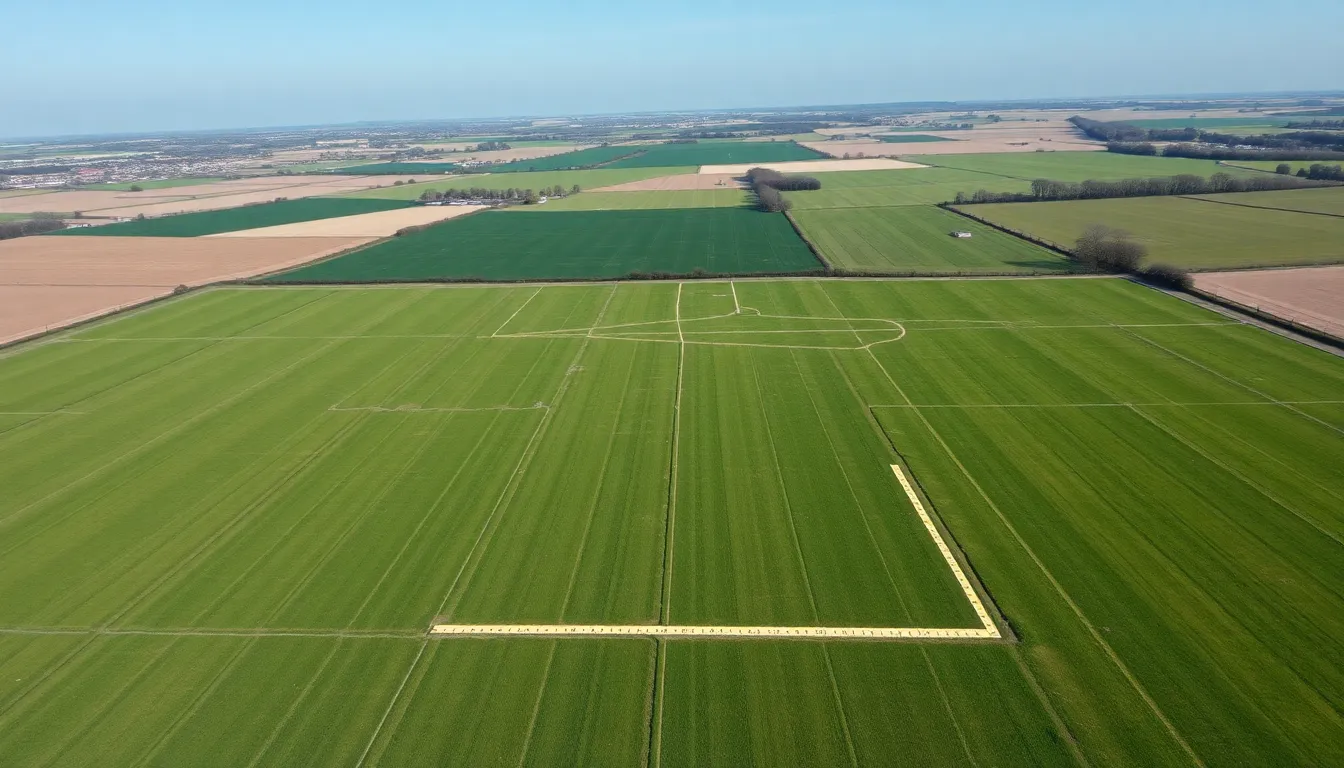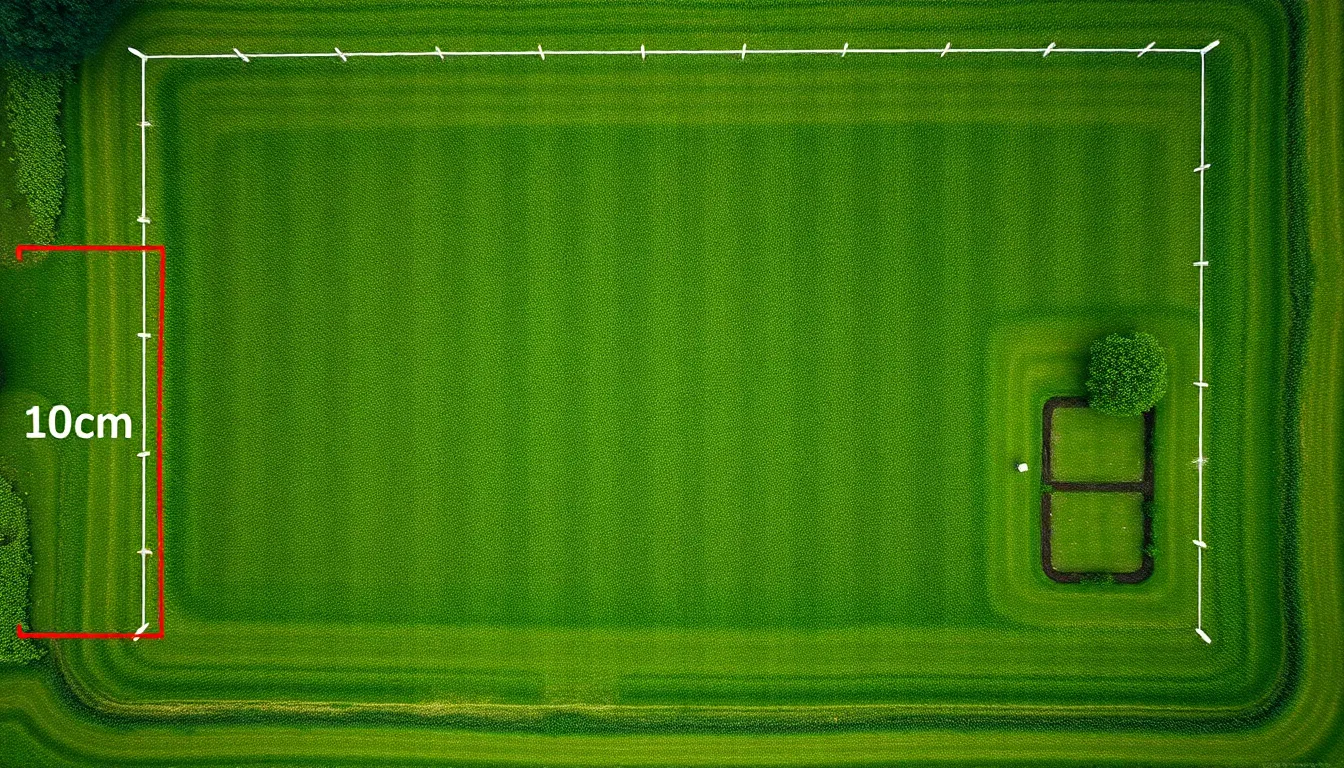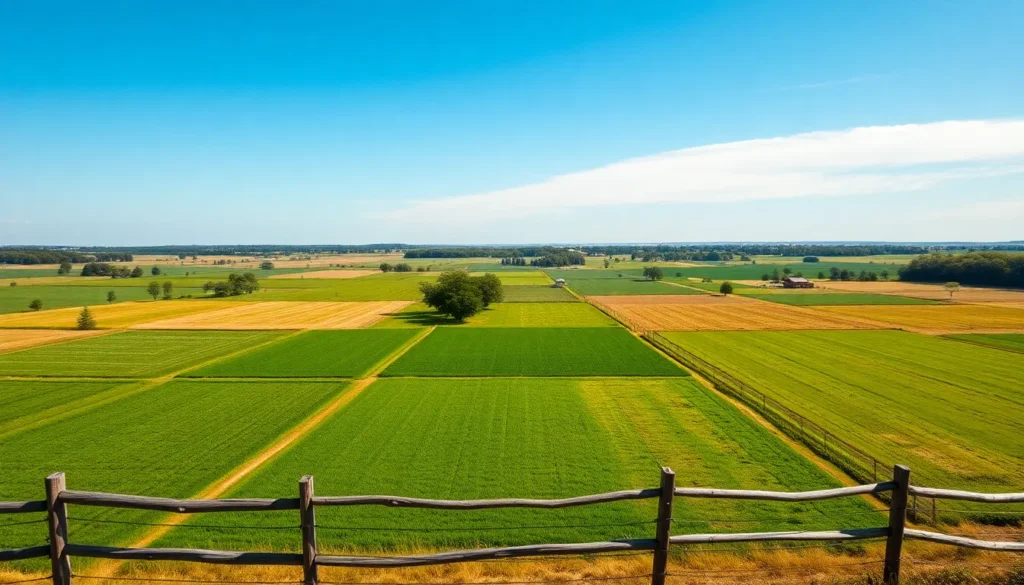When it comes to land, everyone’s heard the term “acre,” but how much space does it really cover? Imagine a plot big enough for a soccer field, a small farm, or even a cozy backyard BBQ. One acre is roughly the size of 43,560 square feet, which is a lot of room for activities—or a whole lot of grass to mow.
Table of Contents
ToggleUnderstanding Acre Measurement
An acre serves as an important unit in land measurement, equating to roughly 43,560 square feet. It finds frequent use in real estate, agriculture, and urban planning due to its practicality.
Definition of an Acre
An acre represents a specific measurement of land equal to 4,840 square yards or about 0.4047 hectares. This unit often indicates the size of agricultural plots, residential properties, or open spaces. Many people visualize an acre as a rectangle measuring 209 feet by 1,000 feet, though its shape can vary. In practical terms, owning an acre means having enough land to pursue various activities, such as gardening, building structures, or recreational uses.
Historical Context of Acre Usage
Historically, the acre originated from the amount of land that one man could plow in a day using a yoke of oxen. This measurement dates back to the medieval period, primarily in Europe. Local customs and regional farming practices influenced the exact size of an acre over time. Since then, the acre became standardized, facilitating land sales and taxation. Today, the acre remains a valuable and widely recognized metric for assessing land, maintaining its relevance across multiple domains.
Converting Acres to Other Units


Acres can convert into various units for better understanding. Two common conversions involve square feet and hectares.
Acres to Square Feet
One acre equals approximately 43,560 square feet. To visualize, a standard football field covers about 57,600 square feet, showing an acre is slightly smaller than a football field. This conversion aids in real estate transactions where square footage is often the standard metric. Knowing the square footage helps in evaluating property dimensions and potential land usage. Calculating area in square feet becomes particularly useful for comparing smaller plots of land against larger properties.
Acres to Hectares
An acre also equals about 0.4047 hectares. Hectares are often used in agriculture and land planning worldwide. This conversion becomes essential when assessing land in regions that utilize the metric system. A standard hectare measures 10,000 square meters, allowing for easy land calculation when planning farms or parks. Understanding hectares in relation to acres facilitates international discussions about land use and sustainability.
How Much Is 1 Acre in Different Regions
Understanding the value of an acre differs based on location and usage. Each region presents its own context for this unit of measurement.
United States
In the United States, an acre remains a standard measure for land. Investors and homeowners often evaluate properties based on acreage. The average price per acre varies widely, influenced by factors such as location, land use, and proximity to urban areas. For instance, rural regions may see prices around $3,000 to $5,000 per acre while urban areas can command prices exceeding $100,000 per acre. Top states, such as California and New York, tend to exhibit higher prices due to demand. Understanding local market trends proves essential for accurate evaluations.
International Comparisons
Internationally, the concept of an acre translates differently. Many countries utilize metric measures, such as hectares, which equate to approximately 2.47 acres. In Australia, for example, land is often measured in hectares, leading to a different pricing structure. Farmland in Canada can be around CAD 2,500 per acre depending on factors like fertility and water access. Recognizing these variations ensures better comprehension of land values across various regions. Familiarity with regional measurement systems enhances global real estate discussions and promotes effective land management strategies.
Practical Applications of Acre Measurement
Acre measurement serves important purposes in various fields, including real estate and agriculture.
Real Estate and Land Buying
In real estate, an acre is a fundamental metric for property evaluation and sales. Buyers often assess land size in acres to compare properties effectively. It simplifies the process of determining land value and investment potential. For instance, parcels in urban areas might fetch prices over $100,000 per acre, while rural land can be as low as $3,000 per acre. The location significantly influences these figures, making it crucial for buyers to understand local market trends. Investors frequently analyze these metrics to calculate development costs and future returns.
Agricultural Use
Agriculture heavily relies on acre measurement for land management and productivity analysis. Farmers gauge field sizes in acres to plan crop yields and optimize planting strategies. For example, one acre can support various crops based on the specific agricultural practices employed. Crop rotations and soil health depend on accurate land assessments. In Canada, farmland averages around CAD 2,500 per acre, emphasizing the importance of investing in fertile land. Agricultural stakeholders also utilize this measurement for irrigation planning and resource allocation, ensuring sustainable practices within the industry.




